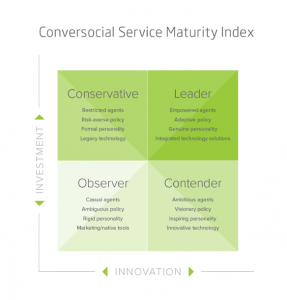As brands, the last thing we all need in social media is negativity. On social media it is very easy to receive negative comments and responses, simply because you are leaving yourself open to them due to the fact you are engaging with people online.
In fact, the more successful you are the more likely it is that you will start to receive negative comments. On Facebook, because it has such tremendous reach, there is even more opportunity for people to drop the negative bomb on your brand.

So how do we manage such negativity? Well, we could go and hide under the virtual duvet all day long, or we could deal with it. There are numerous aspects to dealing with negativity on Facebook, and we’re going to focus on these in this post.
Don’t disable or remove comments
One of the biggest mistakes you can make as a brand on Facebook is to disable the ability for visitors to publish posts on your page or to remove the comments. This is because Facebook has incredible potential and benefits for any brand, and these far outweigh any rationale behind not letting people to post or removing negative comments.
The best approach from the outset is to take on the challenge of negative comments and focus on positive ways to manage them (unless, of course, they are racist or offensive, or a legal issue).
What’s more, people will start to get a little annoyed if they aren’t allowed to comment freely. And if you have a dedicated fanbase this becomes even more of an issue. If that fan base sees that you aren’t allowing comments for your content it will begin to see you as a closed shop. You are meant to engage, and the very best brands in the world are open and honest no matter how big they are.
Don’t close things down or remove comments.
3-step guide to dealing with negative comments
1. Acknowledge comments
The first thing you have to do with negative comments is acknowledge them. This is vitally important because people expect a quick response. While you may not be able to solve a problem immediately you can certainly acknowledge that there is a problem. Simply respond with an acknowledgment comment yourself.
Try: ‘We have received your comment and have taken note of your concerns. We will be in touch shortly to address the issue.’
Why is it important to get a simple sentence like that out there? Well, customers expect a quick response, and simply knowing that someone has decided to acknowledge the pain is a massive step forward. And it’s a quick step forward too. The most important thing to realise here is that people see the interaction and follow it as it develops. By offering a quick acknowledgement you have immediately set a positive tone. And it simply shows that you care deeply about how your customers feel about your product or service.

This particular acknowledgment happened within 24 hours, and Nandos did the right thing here. It wasn’t even a ‘common complaint’ in that it wasn’t necessarily and directly about service. Nando’s didn’t leave it to linger, and even mentioned it was going to discuss it directly with the restaurant in question. All within 24 hours.
2. Apologise when an apology is necessary
You then need to apologise as quick as possible if an apology is necessary. It isn’t always necessary, and small and silly comments can largely be ignored if they are not offensive. But if someone is genuinely annoyed and upset at the service they have received you need to ensure that you apologize.
There is a very good reason why apologizing for poor service on Facebook is a good thing. It’s the fastest way to gain anything close to the forgiveness that you need as the best outcome. People will see that you have apologised, and that you are, most importantly, not too removed and detached from reality to say sorry. Any company that can say sorry is a positive, caring company.
Make it sincere. Don’t use a statement that has been manufactured. Create a sincere, genuine apology and post it as soon as possible. Take any big brand that does well on Facebook and you will find that they are not too big to apologise. Take their lead and make it your business to say sorry when it’s needed. Want to see a real and sincere apology? Take a look at the classic Barclays UK example right here.

3. Deal with the matter offline
Another good idea after you have acknowledged the issue and said sorry if necessary is to arrange to deal with the matter offline. Continuing to discuss an issue on Facebook is never a good idea, even if it is calm, and lacking in the initial high levels of emotion. This is because people will simply see that there is an issue, and they will gain the kind of insight into your customer service strategy that they really don’t need to see.
Deal with as much as you can in private and offline. Facebook allows pages to reply to sensitive public comments in private. A note is displayed publicly to show that the page has responded to the customer.
Give the customer a number to call your company on and have them deal with the issue off Facebook. It allows the customer to feel like they are being treated as an individual. You’re taking their comments seriously.
Going “offline” takes away the problem and does not broadcast every detail on Facebook. While you may not end up in a situation where you are throwing insults at each other on Facebook, you are still dealing with what is a problem. And you don’t want a problem to be associated with your brand for too long.

Be nice, apologize if you need to, and then take the conversation offline so you can deal with it and contain it. So, to sum up. Acknowledge, apologise and then deal with it offline.
Ninja stuff: Ignoring some of the comments
You can actually do this, but this only works if you have a very strong community, because the community will be the only voice you have if you leave things alone. Like we have already said, leaving it alone is not ideal and is certainly not best practice. But if you are growing (fast) and you have a community that is incredibly loyal to you, then you can actually leave things alone and let that community have your back.
If you are growing fast and have that strength, then try it. Try it out with comments that are simply small criticisms that can essentially be shrugged off to an extent. See what the community does with these. The community may help, and its ability to help can be significant.
You can tell this is working when people come to your aid, offer their own comments on a situation and start to offer up their great customer service stories, their experiences. It works even more when people start offering their own (sound) customer service to customers that feel disgruntled or aggrieved.
Banning commenters: For the haters
This is not to be followed as a course of action unless there has been real hatred of the worst kind. We’re talking racial slurs or offensive material that is designed to hurt, harm or offend. Again, as a brand, you probably won’t be facing this kind of rubbish on a daily basis, but if you do and it is genuinely hurtful and offensive, get it banned.
A word about the offensive stuff. You really don’t want nasty stuff on your feed and neither does your customer base. Delete anything that is offensive, and that’s the bottom line. Turn on the “profanity filter” in your Facebook page settings. Add words you’d like to block from comments and posts.
You can also use the opportunity to then ban the person from your page and report the person to Facebook and get them out of the picture. This is perfectly acceptable and it is actually a sign that a brand is looking at it’s content, and thinking about the fanbase.

If you imagine it from a customer’s point of view for a second. They hit up your feed and then start to see nasty words, offensive comments about race or gender or anything like that. What picture does it paint of your brand?
Apart from the really nasty stuff, you should be engaging, even when criticism flies on Facebook. Essentially, the more you communicate and try to resolve stuff, the more you are practising good old-fashioned customer service, and that makes for a better experience for all of your customers.
Digital & Social Articles on Business 2 Community(69)
Report Post








